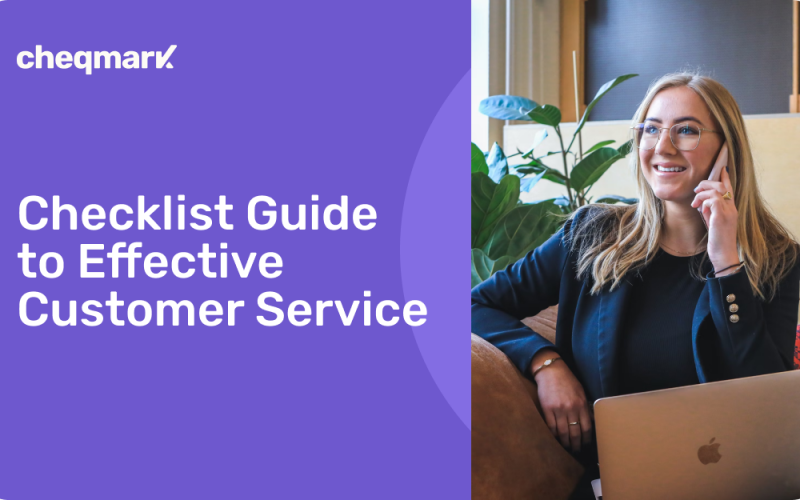A single sales or customer service call can be a treasure trove of learning. By reviewing the call recording, you can uncover the reasons behind the customer’s outreach, identify the specific issues they were aiming to solve and evaluate the performance of your team or the contact center in addressing the call.
This process offers critical insights into the customer experience, presenting new opportunities for business enhancement and product innovation. Once you understand the importance of call recording, it’s time to move on to a guide that will help you use this technology more effectively.
1. Inform Your Interlocutor
Transparency is crucial in providing outstanding customer support. It’s important to inform your customers that their call will be recorded. Clarifying the reason for this recording, whether it’s for internal training or improving processes, is essential.
2. Improve Coaching and Training
Recorded calls are a goldmine of data that can significantly enhance coaching and training efforts. Yet, the potential of these insights frequently goes untapped, primarily due to the labor-intensive nature of manually reviewing agent conversations. This method not only consumes a lot of time but also does not do justice to evaluating an agent’s performance, as it relies on a very limited selection of their interactions. Consequently, this approach often falls short of providing an accurate evaluation of an agent’s specific coaching and training requirements.
3. Expand the List of Available Tools
Instruments for recording calls that are tied to a specific location have a big impact on efficiency. There is another way – to use the iPhone phone recorder, which is not inferior to professional business solutions. Those companies and employees who use iPhone call recorders can receive calls anywhere and anytime. Moreover, the iPhone call recorder app is much cheaper than stationary systems. iCall even has a free trial period. The more call recorder tools, the higher the efficiency of call processing. But when you discover one universal application, you can sometimes get as much benefit as from a dozen other tools, and iCall is one of them.
4. Working on Mistakes
In any customer-facing business, there will inevitably be moments when interactions don’t go as planned. This could be the result of a challenging customer or perhaps an off day for your agent. Think of it this way – even setbacks can be stepping stones if we’re open to learning from them. Imagine revisiting conversations with a fine-tooth comb – that’s what reviewing call recordings allows you to do. Together, you and your agent can uncover nuances and errors otherwise lost if left undiscussed.
Beyond that, leveraging this audio gold speeds up learning curves for newbies joining our ranks. Getting hands-on experience with diverse inquiries from different types of customers gears them up for tackling such issues smoothly later on.
5. Listen to Conversations With Your Marketing Team
The marketing team often employs strategies like utilizing buyer personas, segmenting, and analyzing various target groups and customer demographics.
Yet, is grasping customer needs truly within their reach? Likely not as intimately as you or the sales representatives, who engage with customers firsthand on a daily basis. Jotting down details from your chats helps clue in the marketing folks on customer wishes and likes with more clarity.
You get to sift through conversations, picking out ones that shine a light on your typical buyers or grouping them by distinct types of shoppers. Call recordings serve dual purposes brilliantly – supercharging marketing drives and providing rich soil from which more relevant and impactful campaign ideas can sprout.
6. Implement KPIs
Chances are, you’re already well-versed in common Key Performance Indicators (KPIs) like revenue, activity metrics, customer satisfaction scores, and new client acquisition rates. You can’t hit a target you haven’t set. That’s why nailing down firm, numeric aims is key in any game plan. Recording calls opens up a golden chance to dive into loads of data and really get what people are talking about.
Imagine uncovering hidden gems by simply replaying your sales conversations. By analyzing this information, you’ll see the big picture of your sales squad’s achievements and discover specific spots for fine-tuning their chat game.
It’s smart to pay attention to the length of your sales conversations. Ever wonder how long your sales calls should be? Looking at those that have ended in success could give you the clue. This becomes the finish line our sales folks sprint towards, fueling their ambition with each step.
7. Use Others’ Mistakes as Teaching Examples
In any customer-focused business, there will inevitably be moments when interactions between agents and customers don’t go as planned. This could be the result of challenging customer behavior or perhaps an off day for the agent. Let’s face it: recorded calls are more than evidence or records—they’re classrooms in disguise, ready to teach us valuable lessons. Listening back to a call recording can illuminate the little things we might have missed in real time, showing agents exactly how they could step up their game.
Moreover, when it comes to getting our fresh faces up to speed, nothing beats these practical recording sessions. Throwing them into scenarios they’re bound to face arms them with the insights and readiness for handling what’s next like pros.
Conclusion
Chatting on the phone with customers often gives us the gems we need to make our business even better. Mastering the art of capturing talks and breaking them down makes all the difference. Use this guide as your secret weapon; it’s designed to sharpen those efforts and save on what matters most in your business toolbox—time and cash!


